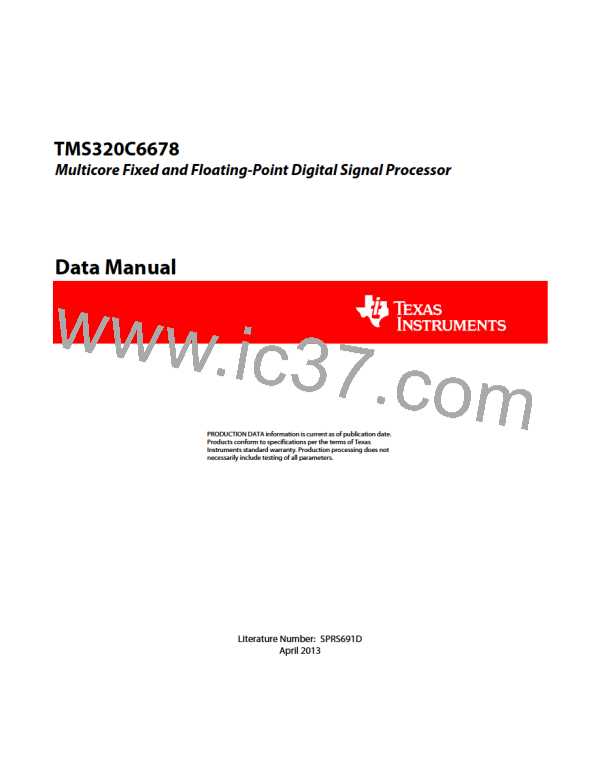TMS320C6678
Multicore Fixed and Floating-Point Digital Signal Processor
SPRS691D—April 2013
www.ti.com
7.23 Timers
The timers can be used to: time events, count events, generate pulses, interrupt the CPU and send synchronization
events to the EDMA3 channel controller.
7.23.1 Timers Device-Specific Information
The TMS320C6678 device has sixteen 64-bit timers in total. Timer0 through Timer7 are dedicated to each of the
eight CorePacs as a watchdog timer and can also be used as general-purpose timers. Each of the other eight timers
can also be configured as a general-purpose timer only, with each timer programmed as a 64-bit timer or as two
separate 32-bit timers.
When operating in 64-bit mode, the timer counts either VBUS clock cycles or input (TINPLx) pulses (rising edge)
and generates an output pulse/waveform (TOUTLx) plus an internal event (TINTLx) on a software-programmable
period.
When operating in 32-bit mode, the timer is split into two independent 32-bit timers. Each timer is made up of two
32-bit counters: a high counter and a low counter. The timer pins, TINPLx and TOUTLx are connected to the low
counter. The timer pins, TINPHx and TOUTHx are connected to the high counter.
When operating in watchdog mode, the timer counts down to 0 and generates an event. It is a requirement
that software writes to the timer before the count expires, after which the count begins again. If the count ever
reaches 0, the timer event output is asserted. Reset initiated by a watchdog timer can be set by programming ‘‘Reset
Type Status Register (RSTYPE)’’ on page 146 and the type of reset initiated can set by programming ‘‘Reset
Configuration Register (RSTCFG)’’ on page 147. For more information, see the 64-bit Timer (Timer 64) for KeyStone
Devices User Guide in ‘‘Related Documentation from Texas Instruments’’ on page 73.
226
Peripheral Information and Electrical Specifications
Copyright 2013 Texas Instruments Incorporated

 TI [ TEXAS INSTRUMENTS ]
TI [ TEXAS INSTRUMENTS ]